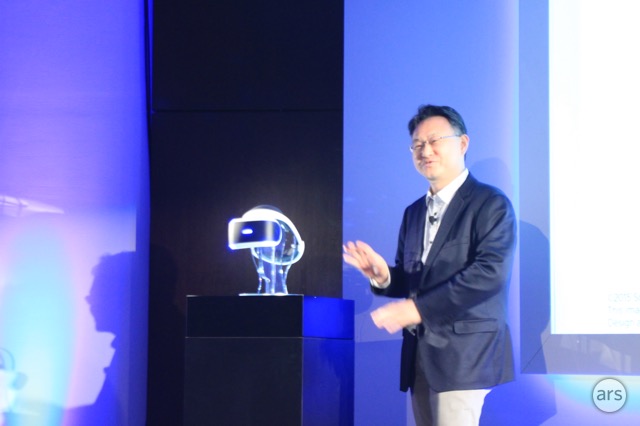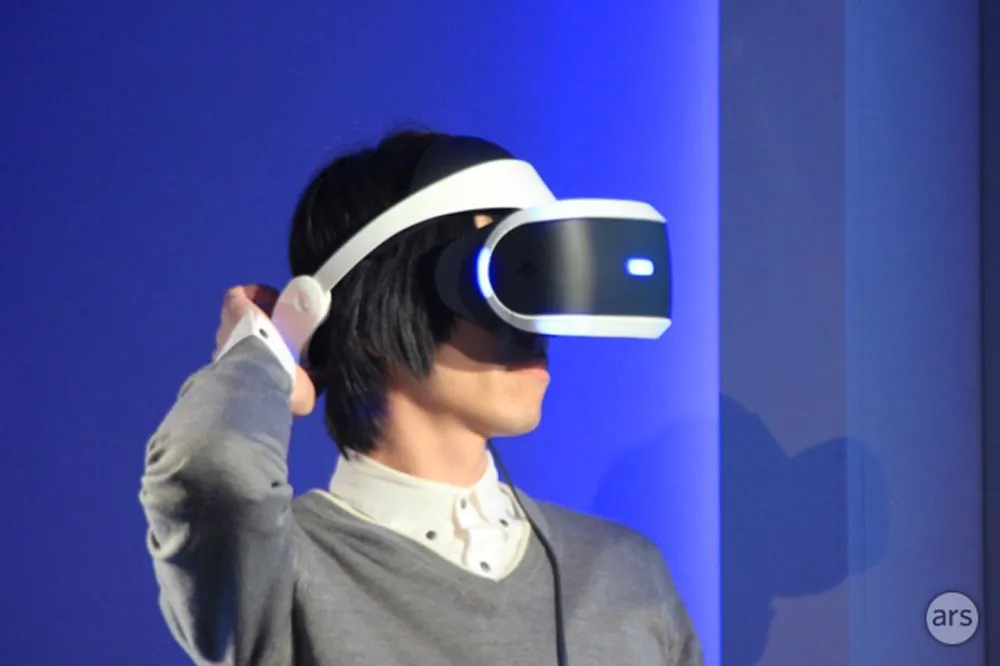The virtual reality news just doesn’t seem to stop at GDC this year. Sony just took the the stage to reveal the new prototype of its console based HMD, the Sony Morpheus, which they say will be released “in Q2 of 2016.” The new version of the headset looks very similar to the one that they showed at last years GDC, but the internals of the device have been vastly improved. Boasting a 120Hz refresh rate, 100 degrees FOV, and a 1920 x RGB x 1080 OLED display (which works by adding a RGB subpixel to each of the 1920×1080 pixels) the majority of the devices enhancements are “centered primarily on the display.”

The improved version of the headset looks to target 120FPS, which Shuhei Yoshida, president of Sony Playstation says that the PS4 was actually designed to natively handle, something they had not mentioned about the device in the past. Games will not be forced to play at this frame rate however, for example, Sony said that the games could be rendered at 60fps, and then upconverted by using Morpheus’ “reprojection” system in software libraries. The reprojection system works by adding an “in between frame” to games that are 60fps that allows them to run at 120fps.
Further adding to Sony’s pursuit of a perfect display was the super low latency, which at <18ms is less than half of what the prototype shown at GDC last year had. This is significant because it means there will be zero perceived latency in the headset as humans can only perceive up to 20ms of latency. That means that gamers will be able to play faster games with faster motion, with far less risk of getting motion sick. Given the type of titles that we could see on the console for VR, this is a major necessity and might make the “Call of Duty of VR” possible (without resulting in vomit stained carpets). And that latency will be put to great use, as the Morpheus will have full 360-degree positional tracking thanks to
Sony also talked about the controllers for the Morpheus. At last year’s GDC the device was shown with Playstation’s Move controllers. However those controllers are nowhere near as ubiquitous as the native Dual Shock controllers for the console. For this reason, Sony made sure to emphasize the ability to use the “Magic Controller” which showcased the ability to use a motion tracked Dual Shock 4 controller. The ergonomics of the device were also discussed during the reveal. It looks like you will finally be able to wear your glasses while in the HMD. As someone who has left my glasses on many a demo table, this is exciting news for sure.
There were four demos shown at the Sony press event, London Heist a demo that takes you into the London Underworld and is a character driven piece, The Deep which has been updated from the version that they have shown before, a demo with little white robots called Bedroom Robots, and the aforementioned Magic Controller demo (which was running natively at 120FPS). Sony has said that we can expect to hear more about the Morpheus at E3.
The Morpheus has a chance to be the most widely adopted HMD initially. Currently there are over 20.2 million PS4 consoles in the wild with those numbers only continuing to climb. The immensely powerful and adopted console seems like a perfect starting place for a true VR experience (as opposed to ‘VR lite’ with Google Cardboard or mobile VR), as it will only require the purchase of an HMD for those users. The 20.2 million number is higher than that of the reported number of Note 4’s in the wild for example (reported to be around 4 million sold in the first month) and is likely a larger number than the number of high end gaming PCs on the market. Furthermore, for those consumers without a PS4 the cost of the console itself is far cheaper (~$400) buying a high end gaming rig (>$1000) or even a Note 4 (~$600-800 unlocked) or Galaxy S6 (~$800 unlocked). Although we still have no word yet on what the pricing of the Morpheus will be, it seems likely that it will be competitively priced in comparison to the other HMDs on the market. Price certainly won’t be the only factor in determining adoption but it is something that is near the forefront of many consumers minds, especially when it comes to adopting an entirely new technology. Ultimately however, performance will be what determines the long term winner in the HMD arms race. Mobile VR vs Desktop VR vs Console VR will be an interesting battle to watch over the upcoming months and years.
—
Photo Credits: Ars Technica


























